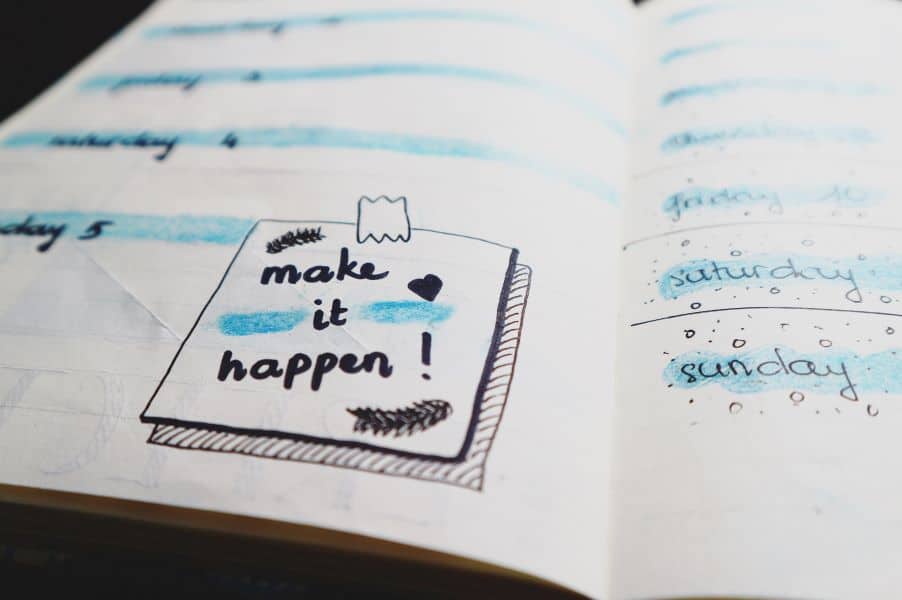Why Being Wrong Makes You Happy
Reading time: 6 minutes 51 seconds
In 2014, 21-year-old Ali Gawdat went to hospital for a routine surgical procedure and never came out. His death devastated his family including his father, Mo, an engineer with an incredible career trajectory at Google.
Hit with intense grief and loss, Mo began to reflect on the many conversations he had with Ali on the topic of happiness. Mo’s engineering background plus Ali’s incredible ability to simplify the complex combined to examine happiness very differently.
To honor Ali’s legacy, Mo soon committed himself to spreading the insights he had gained in these conversations to the wider world. For years, Gawdat approached happiness as he did any engineering problem – with logic, theories, and equations. With Ali, they had developed what they termed the ‘happiness equation,’ a formula Mo believed could be applied to increase life’s overall joy. In his book Solve for Happy, Mo expanded on this.
The Happiness Equation
His formula suggests that:
“Happiness is equal to your perception of the events of your life minus how you expect life should behave.”
Author Tim Urban, separately, came up with a similar kind of equation simply known as:
‘Reality minus expectations.’
In a nutshell, what both approaches suggest is that we are only happy in relation to how our experience differs from what happens.
If things are better than we expect, we’re happy. If they are not, we are not. While this is, indeed, a very simplistic way of conceptualizing happiness, it resonates.
The Different Types of Happiness
There are several types of happiness. There is ecstasy and elation. There is satisfaction and contentment. There is well-being versus pleasure.
Dopamine is a neurochemical known to be involved in motivation and anticipating rewards. When we are driven to succeed, that is dopamine at play. Serotonin is a neurochemical known to be involved in confidence and satisfaction. When we are feeling good right now, that is serotonin at play.
There is happiness that comes from success and happiness that comes from gratitude. A way I like to simplify it is that there is a ‘dopamine happiness’ (happy when motivated), and a ‘serotonin happiness’ (happy in the here and now).
Much of the Eastern forms of personal development work seem to be focused on enhancing our ‘serotonin happiness’. Being mindful. Being present.
Much of the Western personal development work seems to be focused on enhancing our ‘dopamine happiness’. Achieving goals. Driving forward.
To me, being happy requires that we find a balance between both of these forms of happiness.
Both Gawdat’s and Urban’s perspectives of happiness seem to be connected with the dopamine form of happiness. When we believe something will not work out and it does, our brains experience a burst of phasic dopamine as a pleasant surprise. When we believe something will work out and it doesn’t, our dopamine levels lower and we feel bad.
What Makes Us Happy
The research out there on happiness suggests that happiness is largely predicted by the quality of the relationships we have. After that, meaning or engagement in the work that we do matters. Next, our physical health and fitness counts. Only after that, our financial security and mindset have been found to influence our happiness.
The field of positive psychology pioneered by such psychologists as Martin Seligman and Mihaly Csikszentmihalyi explored the concept of happiness extensively. Seligman’s theory became known as the PERMA model.
The PERMA Model
- Positive Emotion: Experiencing positive emotions such as joy, gratitude, and hope.
- Engagement: Being deeply involved in activities that challenge and absorb us.
- Relationships: Having meaningful, positive relationships with others.
- Meaning: Belonging to and serving something that you believe is bigger than the self.
- Achievement: Pursuing success, mastery, and accomplishment for its own sake.
The FLOW State
Csikszentmihalyi’s theory of Flow on the other hand was much simpler. He described it as a state of complete immersion and engagement in an activity.
The key components of flow are that you are engaging in something that you are very good at and that it is challenging you.
There are plenty of other theories as to what is necessary for us to achieve a sense of happiness. Ultimately, however, in trying to understand how happy someone is, there is a conundrum that makes this difficult. It was explained by Nobel prize-winning psychologist, Danny Kahneman.
How You Know You’re ‘Happy’
Danny Kahneman explores two distinct ways of thinking about measuring your happiness subjectively: your experiencing self and your remembered self.
In other words, how you experience a happy moment at a certain time is often very different from how you describe the same moment after the fact.
Indeed, what is known as the ‘Peak end rule’ explains that you tend to remember moments you experience later on differently with a pronounced focus on the peak experience you had at that time as well as the end of that experience.
So, if you worked in a company for five years and at some point had a project which made you extremely happy and you loved it, you’re more likely to remember the job more positively than if there were no ‘wonderful moments’.
Similarly, if the last few months of the job were positive, you’re more likely to believe it was, indeed, a job that made you happy.
The Empathy Gap
So, how do we know if we are happy? It’s easy to know in the moment but when you are asked about your overall life, it’s much tougher. We suffer from what is known as the ‘hot-to-cold empathy gap’.
The hot-to-cold empathy gap suggests that when we are in a strong emotional state we find it difficult to conceptualize how we would deal with a situation we are in if we were feeling more objective about it.
In other words, when you feel good, it impacts how you think about your situation. Ask me about how good my life is and if I feel good when you ask me I may well give you a radically different answer than if you ask me when I’m in a slump.
Add to this, we are notoriously bad at predicting what will make us happy.
Getting Happiness Wrong
In his ground-breaking work, Stumbling on Happiness, Daniel Gilbert discusses several ways in which we get happiness wrong. Miswanting is the term that refers to our tendency to mispredict what will make us happy in the future. People often overestimate the impact that future events will have on their happiness.
Gilbert also discusses the impact bias and our habit of overestimating the emotional impact of future events. We think that happy events will make us happier than they do and negative events will make us sadder than they do. We also fail to take into consideration that our preferences and emotions today will change in the future.
In general, many happiness researchers claim that there is a default level of happiness that each of us has and our happiness will move back to that level a little while after a wonderful or terrible event happens to us.
The Happiness of Being Wrong
With all of this in mind, how can being wrong make you happy?
First, when you expect things won’t be that great and they turn out great that will make you happy.
Second, when you think future happy events won’t make you that happy, you will feel better when they happen than you would if you expected them to be amazing.
Third, remember that your perception of events plays a large part in determining how happy you are. By realizing you might be wrong in the way you’re thinking about something, you get to change your mind and become happier as a result.
Seven Steps to Happiness
So, let’s look at some specific steps you can take to become happier:
1. Take time to appreciate all the wonderful things you have in your life.
2. Lower your expectations of what you think will happen in the future.
3. Spend time doing things that you enjoy and spending time with people that you like spending time with.
4. Challenge yourself with things you are good at and engage in flow.
5. Do things that give you a greater sense of meaning and purpose.
6. Learn to appreciate the smaller moments of happiness in your experiences rather than the big events.
7. Remember you’re probably wrong about the future and that you can change your perception of events and that will determine your happiness.
Happiness is Free
Mo Gawdat turned the incredible tragedy of losing his son into the drive to transform the way people think about happiness. His approach is extremely simple and yet his engineering background means that he has a nuanced way of thinking about how we need to live more cheerfully.
What most of the research out there on happiness agrees on is the critical importance of our perception of how happy we are. It is not so much what happens to us but how we experience it.
When you think about events that are going to happen or events that have already happened, the way you interpret them plays a large part in determining how happy they make you.
By learning to adjust your mindset and attitude about what you experience, therein lies the secret to living a happy life. You have to be prepared to be wrong about the way you are thinking about something so you can change your perspective.
In a world where marketing often promises us happiness if we just buy this next product, we could do well by remembering that what truly brings happiness is not something from the outside but something on the inside. And, it’s free.
I hope you found this interesting – spread the happiness and share it with your network.
Thanks,
Owen.
P.S. ‘How to Become a More Strategic Thinker’ is the latest video on my YouTube channel. You can watch it here.





